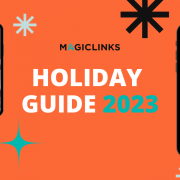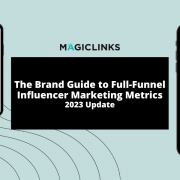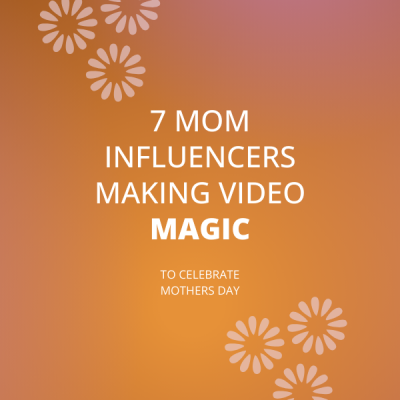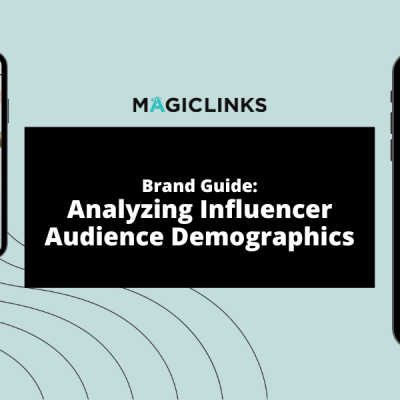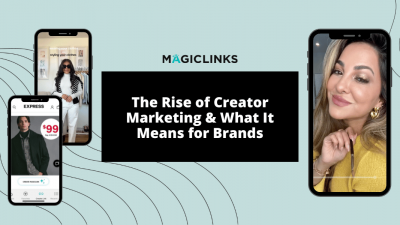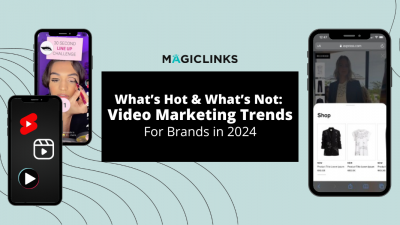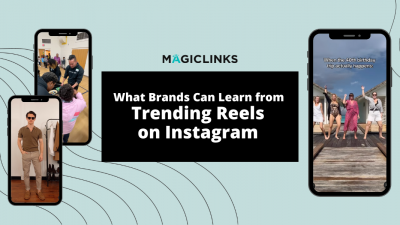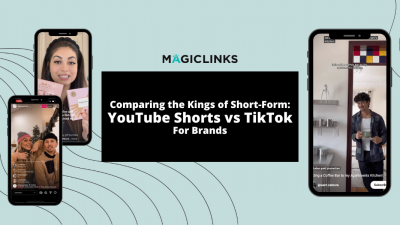With 2.68 billion active monthly users and 500 hours of video content uploaded every minute, YouTube rules the video-sharing social media world—or at least helps rule. It’s the world’s second-largest social media site, ranking just below Facebook. With 62% of the U.S. population accessing the site/app, almost any brand can find an audience there.
Brands use influencer marketing to expand brand awareness and increase sales via social media. However, the platform layout, features, and algorithm can make YouTube a challenging landscape for those new to this type of advertising. This guide will help you learn to leverage YouTube videos to connect with your ideal audience and grow your brand the right way.
What Is YouTube Influencer Marketing and What Makes It Unique?
Quick refresher: YouTube influencer marketing is essentially using YouTube videos made by content creators to promote your brand and drive sales. These YouTube content creators have the eyes and ears of their loyal followers. They can introduce them to and educate them about your products and services in exchange for payment, an affiliate commission, or free products.
It’s essential to keep in mind that influencer marketing on YouTube differs from most other platforms. The platform’s bread and butter is longer-form content, which gives YouTube content creators more time to tell a story and draw in their audience. In 2020, YouTube also launched Shorts, adding more diversity to the platform and rivaling TikTok and Instagram Reels for short-form glory.
YouTube also acts as a primary search engine for video content. Most users actively search for the content they want to watch, which means creator-audience relationships are often more intentional.
These unique features make YouTube an ideal platform for growing brand awareness and making even deeper connections with your audience through influencer marketing.
How and Why Brands Invest in YouTube Influencer Marketing
YouTube is a highly versatile platform with comprehensive tools to help brands take advantage of the opportunities influencer marketing brings. While each brand will use these tools differently, there are some commonalities among successful businesses, including leveraging a specific set of campaign types. The general types of campaigns that tend to work well with video content creation are:
- Awareness-building: Introduces your brand to the audience, usually starting with an unboxing or product review of a signature offering
- Educational: Usually includes tutorials or how-to videos aimed at educating the audience about a specific topic or showing them how to use a product
- Hashtags: Raises brand awareness by having influencers use a specific hashtag when they post about your products or services
- Contests: Having users take a specific action such as commenting or clicking a link to enter a giveaway for a chance to win prizes
- Day-In-The-Life/Vlogs: Sharing real-life routines with the audience to build trust, and make your brand look and feel authentic
The type of influencer campaign you launch will depend on your brand’s style, audience, and overall goals.
Why Use YouTube Influencer Marketing?
YouTube strategies with influencer marketing will yield different outcomes for every brand, but there are a few common benefits that just about every business reaps when they use the platform:
- With over 2 billion monthly users, YouTube has a massive reach and can help your brand achieve the same
- In-depth content presents the opportunity for better storytelling, showcasing more product use cases, and connecting more deeply with the audience
- You are giving people what they want since more users prefer to learn about brands through video instead of reading about them
- YouTube includes lots of built-in and integrated tools to help influencers create fantastic content and keep engaging their fans
- With the addition of YouTube Shorts, there is now a variety of ways to attract your audience through video
YouTube influencer marketing is more beneficial for brands when they put in the effort to build a strategy and do it well. Next, this guide will discuss the steps your team needs to take as you create and execute your YouTube marketing strategy.
4 Steps to Building and Launching Your YouTube Marketing Strategy 2023
Now that you understand the benefits of using YouTube for your influencer marketing, it’s time to learn how to create a successful campaign. Like many aspects of marketing, the best execution keeps strategy in mind at just about every step. If you’re new to this or unsure about what it takes to win in the influencer marketing space, here are four things to do before, during, and after your influencer campaign.
Step 1: Set Goals and Decide on Your KPIs
Before launching your influencer marketing YouTube campaign, you need to know what you intend to accomplish and how you’ll track towards your goals. Alignment between activity and measurement is critical in this medium.
For example, to see whether users are interested in watching the content, you should choose KPIs like the number of thumbnail impressions, unique views, and video click-through rate. If your content or campaign’s goal is increased sales, then analyze website click-through rates and conversions.
Tracking KPIs can get complicated because of platform algorithms and limitations, and the many paths people take to purchase. We consider ourselves to be social metric pros here at MagicLinks, and there’s always room to grow! The key is to understand your goal first, and then focus on the data that best reflects that goal.
Step 2: Lay Out Your Budget for the Campaign
Working with influencers requires an investment, and the type of influencer you work with will determine the size of that investment.
Micro-influencers have anywhere from 10,000 to 50,000 followers and cost an average of $1.4K per video. In comparison, mega-influencers with upwards of one million followers may command $10K or more for each piece of content. Thus, your marketing budget will dictate your brand partnerships.
Step 3: Search for and Select Influencers in Your Niche
If you already know which influencers you’d like to work with, contact their agent or send them a direct message on social media. If you aren’t sure about which influencers to choose, search videos for content in your niche and contact the creators that align with your brand. Keep an eye on the creators your competitors are partnering with – they might be open to interested in working with you too.
With millions of creators putting content out in the universe, searching for the right ones can veer into the “needle in a haystack” category. Consider using an influencer marketing platform that matches you with the best-fit creators. These platforms use algorithmic data to connect you with vetted influencers based on your segment, audience, and budget.
Step 4: Use Analytics to Measure Success Against KPIs
There’s still work to do even after you launch your campaign. If you’ve used an influencer matching platform or you set up your own links or discount codes, you’ll be able to get the KPI data you need to know whether you met your goals. If you’re having difficulty accessing your data, don’t hesitate to ask the influencers you worked with to share their analytics reports.
Taking Advantage of 2023 YouTube Trends
Like most marketing avenues, YouTube has changed over the years and continues to evolve. What worked at the beginning of the year may be irrelevant when the summer rolls around. To create relevant, innovative YouTube content viewers will love, stay on top of these social media trends and features that are driving brand results.
YouTube Shorts
YouTube Shorts debuted in September 2020 as YouTube’s answer to the short-form video craze ignited by TikTok and Instagram Reels. Since then, these short-form videos have done very well (now garnering 50 billion views a day) as a way to entertain viewers and get them interested in long-form content. In 2023, it will be vital that influencers know how to create and edit shorts to draw in an audience and make them want more of their content.
Micro-Influencers
Initially, brands paid hundreds of thousands of dollars to work with big-name YouTube celebrities and get their brand seen by the right audience. In 2023 and beyond, your YouTube marketing strategy should take a more targeted approach.
While these influencers have smaller audience numbers than those at the Kardashian level of fame, their fans are usually much more engaged. This is due to the authentic connections these micro-influencers have with their community. As a result, these creators usually boast higher conversion rates, charge lower per-video rates, and are easier to work with on a personal level.
Fostering Community
YouTube is no longer just about “one-and-done” videos. Users visit the site to explore their interests and find others that share those interests. This allows brands to boost user engagement by working with those who have taken the time to build a culture within their channel.
Even simple actions like hosting live streams and answering questions in the comments can help viewers feel a sense of belonging with their favorite creators and fellow fans.
Creator-Generated Content (CGC)
Typically, influencer marketing campaigns involve creators sharing content to publish on their own channels. Creator-generated content campaigns differ in that creators generate content for the brand to post on its company channels. In exchange, the brand compensates the creator in the form of fees, gift cards, or discounted/free products.
CGC is a win for brands because it saves them time in developing their own videos. And, they are still getting high-quality, relatable content and leveraging creators’ engaged fan bases.
Making Videos Accessible
Brands might be surprised to learn that 80% of viewers prefer to watch videos with subtitles. That same percentage of viewers have negative feelings about ads and videos that auto-play with the sound on.
This occurs for several reasons. First, those who have hearing issues need captions to understand what’s being said in the video. Additionally, users often watch videos in noisy places (or places that don’t allow loud noises), like coffee shops, airports, and classrooms. When you include captions, you accommodate all viewer needs and preferences while boosting your YouTube SEO.
Social Commerce
In the coming years, many will likely look to social media as their primary shopping avenue. Already, a full quarter of U.S. consumers start their online shopping process with a search on YouTube.
YouTube acts as a key social commerce platform, giving creators the opportunity to link to specific products in their video descriptions and channel info. This allows your brand fans to shop right from an influencer’s video content, increasing their sense of convenience while boosting your conversion rate and bottom line.
Best Practices to Keep in Mind for YouTube Marketing 2023
Influencer marketing YouTube campaigns can be highly beneficial for brands, but only when they’re done right. As you gear up for your first (or your next) campaign, there are key things you need to keep in mind to ensure you’re following best practices and giving yourself the best chance of success.
Leveraging YouTube’s Algorithm for More Views
YouTube runs on an algorithm that automatically determines what users will see when searching for videos in your niche. Savvy creators will be on top of YouTube’s algorithm changes, but your brand should be too!
Here’s what the algorithm prioritizes for each video:
- Relevance: Ensure that content creators’ YouTube videos include relevant keywords in titles, tags, descriptions, and captions
- Engagement: There should be evidence that the audience is liking, sharing, commenting, and subscribing to the YouTube channel
- Quality: Relevance and engagement scores and user surveys determine that the influencer is highly respected in their niche
- History: The creator should be finding ways to keep users watching additional content so that YouTube can keep recommending their videos
It’s important to note that YouTube uses a slightly different algorithm for Shorts that includes watch time.
Personalized Search Results
Keep in mind that YouTube personalizes its search results to each person. Consequently, what a user sees when they type in a particular keyword is based on several factors, some of which are unique to them (such as search history).
You can’t control your audience’s search history, but you can ensure videos are optimized for YouTube searches. Understand best practices for SEO on YouTube, so you can make recommendations to creators that you partner with on content.
Additional Tips for Finding the Best Influencers for Your Brand
Brand-aligned partnerships make all the difference in the success of your YouTube marketing strategy. As you hunt down the right creators, remember these best practices:
- It’s easy to get distracted by a shiny, heavily-hyped creator. Stay focused on creators that will resonate with your specific audience by developing an ideal creator persona. That way, you’ll know you’ve found the right fit when you see it!
- Building professional relationships is much easier when you agree on the fundamentals. Work with influencers who share and embody your brand goals and even your company values.
- Make sure you have proof of an influencer’s ability to drive results. Ask them for testimonials and data on how they’ve brought value to brands in your space. This is another reason why an influencer marketing platform may be a good idea. These companies, like MagicLinks, ensure that your selected influencers have already been vetted for their professionalism and results.
YouTube Influencer Marketing Is Worth Your Investment
Nearly 90% of marketing professionals are already riding the YouTube wave. Why? Because viewers want to learn about products and services, but they don’t want to feel sold to. YouTube creators are leading the charge towards more engaging, genuine marketing content, and with the platform continuously improving, influencer content will only continue to rise in popularity.
It’s not too late for brands to learn how more about YouTube creator campaigns and solidify their video strategy. For more information on working with MagicLinks’ 35K+ community of vetted creators, schedule an intro call with us.

